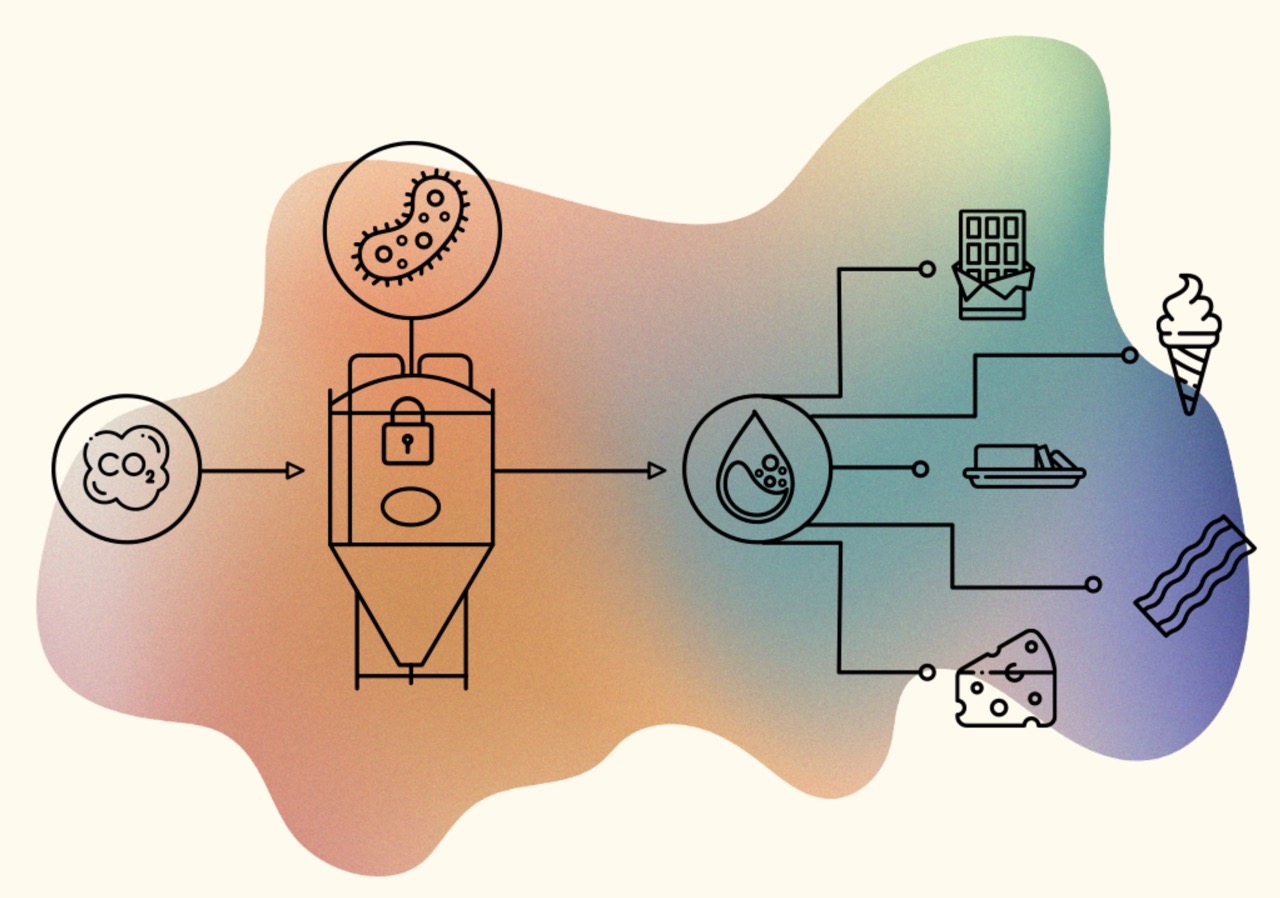Four quick fire takeaways from one of the leading synbio conferences.
For using clean, cheap electrons to build the future, I think electrochemistry and synbio will be really important.
I knew a little about electrochemistry startups and trends, but almost nothing about synbio. So I immersed myself at the BuiltWithBio conference in Oakland.
Here are four short takeaways.
📉 Falling costs to read and write DNA
🎛 Control over material properties vs existing materials/foods
⚙️ Tooling is improving iteration speed
📈 Fermentation capacity is a big bottleneck
Before we dive in to these, first a little context. I had been sleeping on the potential of synbio to produce valuable chemicals, foods and other products from clean inputs. But these pathways enable so many products categories that can be far better than what we have today.
I’m interested mostly in chemical and food applications, but synbio goes way beyond that. As per Drew Endy, one of the leading thinkers, academics and advisors in the space, it can enable a "design anywhere, grow everywhere" paradigm that can lead to a massive upgrading of local manufacturing". With that in mind, let’s dive in.
📉 Falling DNA Costs
I think falling solar, wind and battery costs are one of the great enablers of our time. Well, plummeting DNA read and write costs may also be a great enabler, just earlier in its progression.
Rob Carlson has shown the dramatically falling costs of sequencing and synthesizing DNA *whilst* improving productivity. The Carlson Curve of falling sequencing costs is named after him.
These improvements are enabling better synbio based products, commercialized faster.


🎛 Control Over Material Properties
Some fascinating startups are working on materials using far more control than ever was possible by ag or oil refining. They all still need to execute by de-risking their tech, hitting PMFm bringing costs down and scaling.
But the tech makes me feel like I'm living in the future.
Circe Bioscience
Circe Bioscience engineers microbes that consume CO2 and hydrogen and produce triglycerides (TAGs) akin to milk fats. They can produce tailored TAGs via different microbes. We’ve never had this level of control over the *taste* of fat blends.
I met cofounders Shannon Nangle and Milad Moshfeghian at the conference and was impressed by their ambition and high level go to market strategy.

Intropic Materials
Intropic Materials produces enzymes embedded in materials, which catalyze only under certain conditions. They are first targeting plastic bags. Their bags can degrade in days using basically a warm bath, making it easy for recycling.
In meeting Aaron Hall, the founder, his passion for addressing plastic waste and a bio-circular economy really comes through.

Conagen
Conagen has developed a debonding glue using fermentation that has nearly an order of magnitude more shear strength vs existing products. This allows for electronics components that can be taken apart but then put back together again.

Checkerspot
Checkerspot is developing better performing and lighter ski components. They feed sugars to micro-algae in bioreactors to produce oils which are processed into materials.
They also have a D2C brand called WNDR-Alpine that sells high performance ski gear using algae oil-derived ingredients. This allows for better material characteristics over existing skis. They are taking the tried and true strategy of starting with relatively high value, low volume goods, though many synbio companies have gone to market with lower value commodity chemicals.

Wild Earth
Wild Earth makes proteins for dog food using koji. Koji is a fast growing fungi used to ferment soybeans, miso and sake. But Ryan Bethencourt and team have isolated strains that, when fed beet sugar, produce proteins.
Pitching Mark Cuban on Shark Tank helped give the team their start, helping secure an initial $550K investment for 10% of the company in 2019, before Cuban led a $23M follow up round last year.

️️️⚙️ Better Tooling For Faster Iteration
Amyris talked about how it only takes them 6 months to go to market with a new product instead of years in the past. Someone from Lanzatech echoed this.
Better tooling has been helped by ML helping to accelerate the discovery of microbes and enzymes.
📈 Fermentation Capacity Bottleneck
This seemed to be the big bottleneck everyone was talking about.
Apparently true at the last Built With Bio conference as well! Startups are working on this, and I know there’s some announcements soon. Seems like the race is on to be the first AWS for fermentation 👀
Energy Use
A lot of the energy needed for biomanufacturing is in the fermentation process. One pilot size site for bioreactors can use megawatts of electricity.
We will need a lot more solar, wind and storage build out to scale up the future of bio and electrochemical industries.
There were so many more interesting startups to talk about like String Bio (methane to animal feed and protein), Aralez Bio (non-categorical, ie novel, amino acids), Geltor (bio-collagen for skincare and soon protein powder), Sincarne (mycelium to functional foods) but I did say this would be short.
I'm thinking through ideas for electrochemical or synbio startups that use clean, cheap feedstocks to make valuable things. Reach me on Twitter, LinkedIn or email me [at] tsungxu [dot] com.
